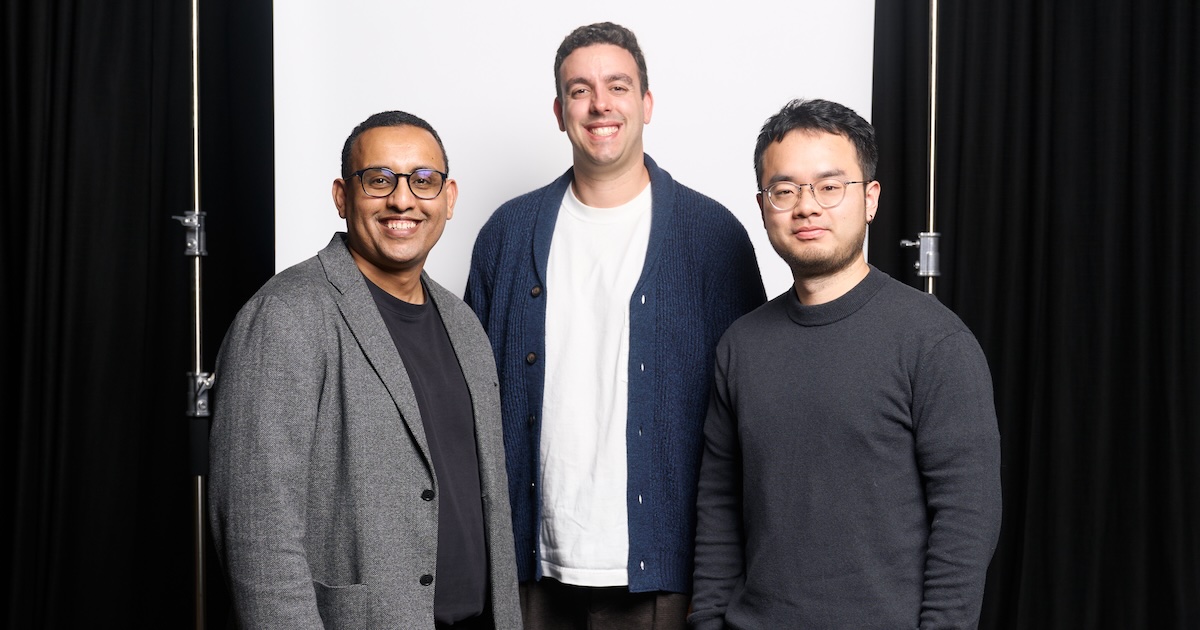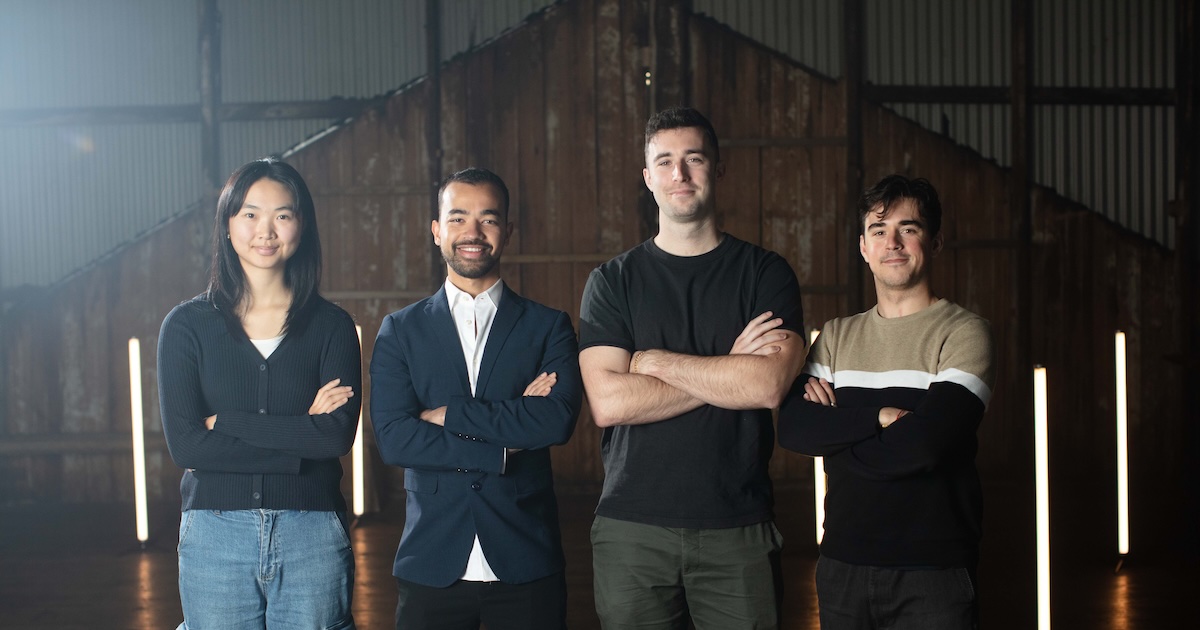
Part 3: WTF is GTMF + PLG? Nine levers of Product-Led Growth
In part three of this four part series, Blackbird Partner Tom Humphrey unpacks what product-led growth means and offers a 9 level framework for levering PLG.
Welcome to Part 3 of our four part series on Go-To-Market (GTM) and Product-Led Growth (PLG), adapted from a recent Blackbird Founder Academy workshop.
Part 1 introduced GTM and in Part 2, we dug into the different GTM models and factors that guide designing your GTM strategy. In Part 3, we’ll unpack Product-Led Growth and take you through a 9-Lever framework for better leveraging product in your GTM.
Product-Led Growth
A founder mentioned to me the other day, “an investor told me I should be more product led - what does that even mean?” PLG is a hot buzzword in B2B SaaS. The growth stories of Dropbox, Slack, Zoom, Atlassian, and others have set the stage for an attractive GTM framework that lets product do the talking, as opposed to the more traditional “throw more paid marketing and salespeople at the problem” approach.
Almost all pitch decks talk about it; almost all VCs blog about it (yes, the irony is noted). And for good reason - when executed successfully, PLG can fire up growth and turn companies into rocket ships.

PLG is a philosophy, not a condition
However, there are two problems with the way that PLG is typically framed. First, the term is commonly used in a way that would lead you to believe it is a condition or state of being - Slack and Zoom are PLG companies, Palantir and Crowdstrike are not. Second, the companies that are “PLG companies” tend to be extreme examples of it.
The effect of this leads one to think that to be product-led means you have to be like those companies, which can often be confusing and frustrating - you’re a founder, you want to be product-led, but it's unclear how mimicking these companies makes any sense for your product or market.
In fact, PLG should not be considered a condition, but rather a philosophy. It is not a set formula, but rather an approach by which founders look at each of the components of their GTM and figure out how best to leverage product to better achieve their goals of acquiring, growing, and retaining customers.
To be product-led, the question should not be “how do I be like Slack?”, but rather “how do I better use product for my go-to-market and customer?”

But first, why all the hype?
First, lower customer acquisition costs (CAC). Customer acquisition enabled by product tends to be a lot cheaper than acquisition through paid marketing and human-enabled sales. A 2020 OpenView study found that SaaS companies with a predominantly self-serve GTM had a median sales and marketing spend of 12% of revenue, versus 30% for companies that focused on inside, field, or channel sales. In turn, a lower CAC allows for more pricing flexibility and the ability to reach lower ACV customers, opening up broader market opportunities.
Second, better buyer journeys. Top of funnel features such as freemium tiers or free trials help users become informed of your product and get to a place of value faster. Also, data-driven motions for upsell that are based on customer usage tend to be more natural than “in your face” sales people.
Third, increased sales velocity. Product scales, people don’t. When you are reliant on salespeople for growth, you are beholden to the limits of your bank account and your hiring and ramp up cycles.
Fourth, greater product obsession. Companies that are product-led in their GTM tend to be more product obsessed in general, and the best products tend to define the best companies.
The “PLG Framework”
Approaching the question of “how can I be more product-led?” can be challenging. To help, we have developed a tool that can be useful for framing a discussion - “The PLG Framework”.

The Framework identifies nine GTM product levers that can be pulled. Determining which lever to pull and how hard is ultimately dependent on your market and customer. Let’s dig into each.
1. Main Target
This lever asks “who is the key person you are targeting?”
Non-PLG places the focus on the enterprise buyer, Semi-PLG on Teams or SMBs, and Full-PLG on individual buyers (consumer or prosumer). Your ability to leverage product in your GTM is heavily impacted by your choice of target buyer - the more you target an individual user, the more wiggle room you create for a simpler purchasing process and bottoms up initiatives. With PLG, users become the buyers.
It is often possible to serve the same market with a similar product but target a different buyer. Take the example of Zoom and Cisco’s Webex. Webex was the dominant player in the enterprise video conferencing market. Zoom had a better product but realized that it was a crowded market and going account-to-account to convince them to switch to Zoom would be a slow burn. Instead, they launched a freemium model (anyone could use Zoom for free with a 40 minute cap on meetings - a logical threshold to distinguish between personal and professional usage) and targeted individuals. The bet was that as more users tried Zoom, employees and businesses would see how much better it worked and switch to the paid version. The bet paid off and Zoom now has 59% market share in the US and over 300 million daily meeting users.
2. Method of Acquisition
This lever asks “what is your primary channel for attracting and acquiring customers?”
Non-PLG places the focus on paid marketing channels, Semi-PLG on organic, and Full-PLG on virality. Growing via organic acquisition (word of mouth, PR, content, referrals, marketplaces, etc) is a brilliant outcome and difficult to achieve - the best result is when users discover the product through a trusted source or when looking to solve a problem. But nothing beats true, product-based virality.
One of the great examples of product-virality is Carta, which bakes its primary customer acquisition channel into the core product proposition. A company purchases Carta as its equity management platform, then invites all of its angel and venture capital investors to join to access their shareholding information, which then becomes a flywheel for the investors to become customers and bring on their other portfolio companies.
Within the Blackbird portfolio, Canva has done a brilliant job in building a viral following through its #CanvaLove marketing campaign. One of our newest portfolio companies, Forage, has also managed to build a beautiful “hub-and-spoke” marketing flywheel through a certification process. Millions of users complete skill courses on Forage, then share their course certifications on social platforms such as Linkedin and Twitter, driving further user acquisition.

3. Top of Funnel
This lever asks “what is your top of funnel customer call to action?”
Non-PLG places the focus on the traditional customer demo by a salesperson, Semi-PLG on free trials, and Full-PLG on a freemium product experience. Buyers tend to prefer to learn about a product through usage and not back-and-forth Zoom webinars, and with PLG, marketing funnels generally lead to engaging with the product and not the sales team.
Freemium has become a popular model in many verticals. In consumer, you have examples such as Tinder (upsell for super likes), LinkedIn (upsell to send inmails), Spotify (upsell to remove ads), and The New York Times (5 free articles per month limit). An industry transformed by the concept of freemium is gaming - you used to need to purchase or subscribe to games; now they are predominantly free with monetization driven by in-app purchases. In B2B, you have examples such as Dropbox (free to a 2GB storage limit), Slack (free with limited search and functionality), and Zoom (free for <40 minute calls).
One of the more interesting plays on freemium is the “Canva for Education” initiative, which was launched in early 2020 and offers Canva for free to all K-12 school districts. The program is an amazing act of generosity as well as a brilliant way to build a groundswell of power users who will grow to become future advocates and paid users.

Freemium is not for everyone and often a free trial option can be easier to implement and coordinate with your sales team efforts. Analysis of the top Forbes Cloud 100 public SaaS companies shows that 38% used freemium, 22% free trial, and 66% demo in their strategies (does not add up to 100% due to some companies using multiple strategies). Freemium tends to work best where 6 conditions are met:

4. Sales model
This lever asks “what is your primary sales model?”
Non-PLG places the focus on traditional enterprise sales, Semi-PLG on inside sales (the product does a lot of the heavy lifting with the help of a more success- or advocacy-orientated salesperson), and Full-PLG on self-serve (the product guides the buyer through the entire buying journey).
We spoke earlier about the example of Atlassian (with its Jira product) and Rally Software. Both had a similar product - an agile project management software for development teams - but Atlassian . However, while Rally targeted enterprises and built a GTM motion around that (field sales reps, higher ACV pricing, customized onboarding, on prem implementation, etc), Atlassian targeted developer teams direct and built a GTM around that (marketing-led, lower ACV, self-serve purchasing online, cloud-based product).
One of the brilliant examples of the product-led playbook in the Blackbird portfolio is Dovetail, unsurprisingly founded by Atlassian alumni. Through a graceful combination of content, community, free trials, self onboarding, and a powerful knowledge base that trains the customer champion to become the enterprise sales rep internally, Dovetail has managed to remove buyer friction and crack enterprise sales with a small team focussed on sales enablement, and exceptional customer onboarding.
5. Visibility
This lever asks “how do you communicate product and pricing with customers?”
Non-PLG hides much of the information about your product and pricing from your website and nudges buyers toward “contact us” or “schedule a demo” buttons, Semi-PLG opens up product features and segmentation, while Full-PLG makes product features and pricing simple and transparent.
Today, buyers are more educated than ever before when buying products. The average buyer spends more time on the purchase process before talking to a sales rep (researching, looking up reviews, etc) compared to after. The more information you can provide upfront to buyers and the better you can present your product on review sites, the more efficient your sales process will likely become.
It can often be scary to share pricing on your website. As Jay Simons puts it, “the psychology is: ‘I don’t want to scare the customer away, potentially with a higher price point, before I can explain to them what this could really do, and understand their problems and try to persuade them that it’s going to be worth that ultimate cost.’” But at the same time, not sharing pricing can equally scare customers away and simply serve to introduce friction into the discovery and buyer journey.

6. Pricing model
This lever asks “what is your pricing model?”
Non-PLG pricing is the more traditional subscription licensing model (eg. $20,000 for company-wide access, often structured into versions through “fencing metrics” such as advanced features or premium support), Semi-PLG is user-based pricing (eg. $25/user/month), and Full-PLG is usage-based pricing.
User-based pricing is more common today (eg. Salesforce, Zoom, Slack, etc). In many situations, the number of seats is a good proxy for the value that customers derive from the product (ROI) and allows for an effective expansion of accounts over time. But it is not perfect and there can be situations where a company has a large number of users and is using a product lightly, or has few users and is using a product heavily.
Nothing aligns pricing more closely to actual product-derived value than usage-based pricing, where revenue can flex up not just when your customers grow, but also as you release new product features which help to add value and drive more usage. Usage-based attaches pricing to a core use metric that is a driver of value, such as the volume of compute or data stored (eg. Amazon Web Services, Snowflake), number of messages sent (eg. Twilio), number of API requests made (eg. Clearbit), or transactions processed (eg. Stripe). This is one of the features that attracted us to FL0, which prices its low code application development platform based on runtime and API calls.

7. Time to Value
This lever asks “what is the speed for getting a customer to a position of value?”
Non-PLG involves a heavier implementation process that takes time and may require support from the customer, the company, and potentially consultants, Semi-PLG has a shorter and lighter set up process that can typically just be handled by the customer alone, and Full-PLG involves a simple activation of the product and customers experiencing “Day 0 value”.
“Day 0 Value” is based on the idea that the faster and more easily you can get a user to value, the better. This is achieved by having a product that is easy to understand, evaluate, adopt, and integrate into existing workflows, ideally with little to no help.
A great example of a company with “Day 0 value” in the Blackbird portfolio is Multitudes, a coaching platform for software teams. Multitudes integrates with Github and other work tools (Slack, Jira, Asana, etc) to pull in user engagement data and provide insights and recommendations on how to improve the way that teams work together and communicate. One of the beautiful features of Multitudes is its speed and simplicity to set up - you click a button to integrate Github and Multitudes is instantly streaming in data, delivering insights, and providing customer value. Integrations can be a great hack to increase the speed to value.

8. Engagement
This lever asks “what is the core driver for engaging with a customer?”
Non-PLG means that you rely on success personnel to reach out to customers and engage with them on upsell and product experience conversations. Semi-PLG involves leaning in on product-led methods for engaging customers, but with limited personalization. Full-PLG involves monitoring usage data and making hyper-customized recommendations to adapt user behavior and provide further value. These communications are automatic and omnichannel through email, push notifications, SMS, etc and are targeted to bring users back to the product, enhance their experience, and drive additional purchases. The ultimate goal is to be “Just In Time” - to prompt the user to take an action or upsell to the paid version right at the perfect moment.
One company that has famously (and controversially) optimized the way to engage users through product is the investing app Robinhood. Robinhood gamifies the investing experience - users get a free stock on signing up (“Day 0 value”!) revealed by picking one of three face down cards, see digital confetti when making their first investments (this feature has since been adapted), receive backslapping affirmation emails following trades, experience a suite of customized push notifications, and are constantly cross-sold and recommended other products to buy based on the investments they or others have made.
9. Connectivity
This lever asks “how closely connected are your customers through product?”
Non-PLG provides customers a siloed product experience, Semi-PLG a community-based experience, and Full-PLG a networked experience.
With most products, customers are fairly siloed in the sense that they have their own instance and do not interact with other customers and external users. Over the past few years, there has been a big surge in popularity for the idea of building communities around a product. Community has gone from a “nice to have” to a key business priority. Salesforce has built its Trailblazer community which was over 1.7 million strong by its 5th anniversary, Microsoft bought Github for its large community of developers, Peloton invested heavily in community and boasts a Facebook page that is over 400K strong, and Outreach bought Sales Hacker which it considers to effectively be their “outsourced CMO”. One of the best examples of community building I’ve seen is Culture Amp’s “People Geeks Community”. These communities are forums where users can learn and exchange ideas, collaborate, attend events and meetups, etc.
A step further along the PLG curve is to actually network your customers together through the product itself, as opposed to outside of the product in a community. Ideally, this will in turn have network effects, where the more people using the product in a network increases the actual product value itself. A great example of this is Slack, which recently launched its connect feature, allowing people from different organizations and Slack instances to connect with one another and chat. I’m now set up and connected in Slack with all of the Blackbird portfolio founders that I serve - this act of connecting even led one of the portfolio companies to adopt Slack for their organization and become a new customer. PLG at its best! A similar feature was recently rolled out by SafetyCulture, where users can now give access to their iAuditor templates to external organizations and users.

In sum…
The 9-lever PLG Framework can be a useful tool in assessing how you are, or could be, using product-led initiatives in your Go-To-Market. Ultimately, you need to work customer-back to decide on which levers are possible and impactful to pull. Read Part 4 now!
This content has been developed from our Blackbird Founder Academy, a cohorted program where we help our portfolio leaders to level up, together.




.jpg)





